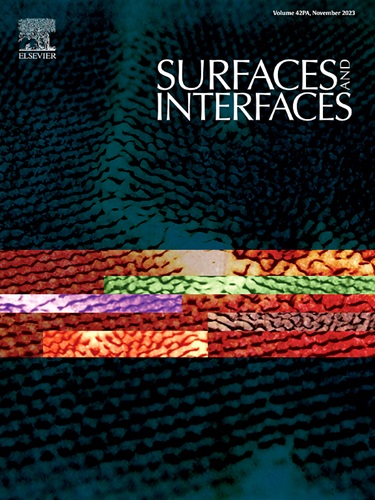Black anatase-TiO2 electrodes for sun-activated photocatalytic degradation of organic water contaminants
IF 5.7
2区 材料科学
Q2 CHEMISTRY, PHYSICAL
引用次数: 0
Abstract
This study presents the synthesis of black anatase in air and its use for the fabrication of a reusable electrode for the photocatalytic degradation of Rhodamine B (RhB) under visible-light. Characterization techniques such as X-ray diffraction, Raman spectroscopy, and Transmission Electron Microscopy (TEM) were used to analyze the properties of black anatase. The immobilization of black TiO2 on a glass substrate eliminates the need for post-treatment recovery of the photocatalyst. Enhancement of photocatalytic activity was achieved by depositing a 4 nm platinum layer on the black anatase TiO2 electrode. Activation of the photocatalytic process (λ ≥ 400 nm) was conducted with a solar simulator, and the degradation of RhB was monitored through visible absorption and time-resolved fluorescence spectroscopy, revealing degradation efficiencies of 94 % and 89 % after 40 and 60 min, respectively. These results are attributed to the elevated levels of oxygen vacancies and the Schottky barrier formed between the platinum layer and black anatase. The methodology's simplicity and the significant photocatalytic efficiency suggest potential for widespread application in solar-driven photocatalytic degradation.

求助全文
约1分钟内获得全文
求助全文
来源期刊

Surfaces and Interfaces
Chemistry-General Chemistry
CiteScore
8.50
自引率
6.50%
发文量
753
审稿时长
35 days
期刊介绍:
The aim of the journal is to provide a respectful outlet for ''sound science'' papers in all research areas on surfaces and interfaces. We define sound science papers as papers that describe new and well-executed research, but that do not necessarily provide brand new insights or are merely a description of research results.
Surfaces and Interfaces publishes research papers in all fields of surface science which may not always find the right home on first submission to our Elsevier sister journals (Applied Surface, Surface and Coatings Technology, Thin Solid Films)
 求助内容:
求助内容: 应助结果提醒方式:
应助结果提醒方式:


